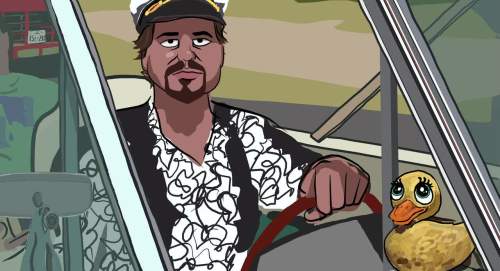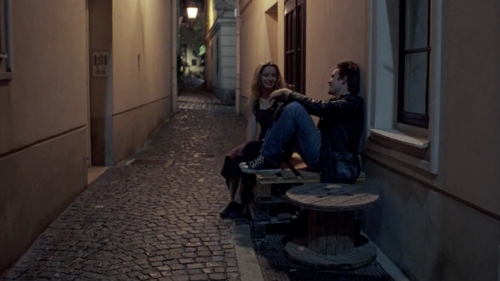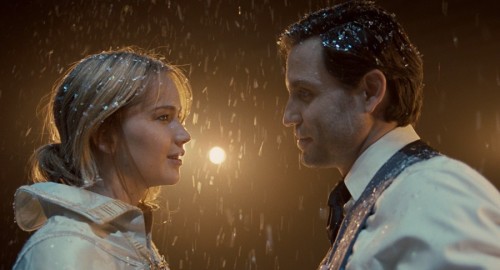A moment to collect some thoughts
Let’s take some time to breathe.


There are lots of movies on my mind right now. Too many to sort out. I’ll try to move through some of the thoughts in this space. Maybe jump around a bit.
I’ve taken beginning steps into the broader world of Richard Linklater, with two of his own firsts: Before Sunrise (1995), his first in the Before trilogy, and Waking Life (2001), his first rotoscope film.
I found the two really wonderful, often in similar ways, as Linklater makes clear pretty quickly if not aggressively how he likes to use his time behind the camera. Take for instance, the premise of each movie. At a certain level, they are almost indistinguishable. A person(s) spends a contained period of time in discussion with other people, articulating his/her views or take on love and the human existence. Or is that all cinema?
In the story, a main difference is that much of Waking Life is spent listening, attempting to absorb and apply others’ thoughts to understand or escape the main character’s situation. Before Sunrise, on the other hand, works more along the lines of a typical get-together movie. The two characters evenly share the space of the film in something like a romantic socratic dialogue, achieving intimacy by asking and answering big questions, and, of course, eventually by having sex.
So what’s different here? How are both of these films not My Dinner With Andre? Well, they still kind of are, except that I don’t remember any sex scenes in My Dinner With Andre (there aren’t really any in Sunrise, either). I think all three films do their best to sanctify the art—or lack—of conversation, and to express ideas through real, empathetic characters. Waking Life has fewer characters that feel real or permanent, but that’s all part of the plan …
Waking Life is a blending of self-perspectives, a dream that lives within and without the allegedly sleeping mind of a young shaggy-haired nomad, one that reminds me particularly of my cousin John. The film slips into a multitude of visual styles, always buoyant and evolving, sometimes so vibrant that it can barely contain the images it contains. Many different artists worked to portray many different people, so in a way we meet the illustrators as we meet the film’s many characters.
They are perhaps not so much characters as people, ordinary citizens who have interesting, provocative things to say. By the end of the film there is a clear sense of community among the strand of disconnected, fairly unmemorable faces; they belong not only to a geographic family but also one of thinkers, talkers, and folks who step outside lines.
Though there is a vague sense of conflict—the main character believes he is dreaming and cannot get out—we don’t really care what happens, as long as we’re taken along for the ride. That’s not so much the case in Before Sunrise, which holds closer to its heart the classic romantic tensions of will-they or won’t-they, even as it wanders the same paths of the unnamed kid in Waking Life.
Both movies affirm the fundamental human desire for dialogue, which in Linklater’s films take the form of conversations between characters. These conversations last long and refer back to themselves, but even in the most academic moments remain fairly unpretentious. It seems to me that this is because Linklater isn’t using these conversations as character idiosyncrasies (as you might find, with frustration, in a lot of Wes Anderson flicks) or even an expression of his own obsession with philosophical queries. In my opinion, these movies dedicated to conversation are Linklater’s attempt to initiate his own dialogue in the audience—to ask them, in a relatively informal manner, what they think about the questions with which these characters grapple.
In this sense his movies are not meant to be educational. Instead they promote a kind of self-examination, but not one that is so overwhelming that the audience loses sight of the other wonders of his movies—in Before Sunrise, a beautiful evening spent wandering the spaces of Vienna, in Waking Life, the buzzing scintillation of everyday conversation.
Of course, Linklater lives in the everyday. It comes through almost too clearly in his characters. In Before Sunrise, Jesse tells Céline he wants to make a 24-hour TV show that documents the days of regular people. What is this reverence for realism? Where does it come from? Stylistically, Sunrise adopts a certain kind of realism in its use of long, slow-moving takes on location in Vienna. Linklater’s camera is gentle, never flashy, and always concerned with people and place—though never exultant. Scenes of an empty Vienna fill the final moments of Sunrise, wonderful examples of Linklater’s ability to make even the most man-made scenery seem natural and unaltered.
Trains appear in both films. In Sunrise, Céline notices how people in Seurat’s drawings seem to be transitory, to blend into the background. Linklater’s characters are like this too; there is little special about them, they live ordinary lives. Jesse speaks about how he got on the train so that he wouldn’t have to see anybody he knew. I admire this—the train scenes made me think immediately of three things: Michael Gondry’s Eternal Sunshine of the Spotless Mind (2004), where the characters also (seem to) meet on a train, The Man Who Shot Liberty Valance, which begins and ends on a train, and the films of Hayao Miyazaki, particularly The Wind Rises, which has a great train sequence.
The transitory quality appears in many of Linklater’s characters. Like all humans, they are fundamentally wanderers, wandering towards nothing, but not necessarily directionless in their wandering. These characters find solace in conversation, in poking their own minds and stimulating the consciousness of others. They know that there is a collective nature to humanity, that by helping each other think and feel, the wandering becomes less lonely, less confusing. In Jesse’s case, wandering holds a desire for recovery and connection. With the man from Waking Life, it holds a yearning for escape.

